China’s Belt and Road Initiative (BRI), formulated in 2013 consists of two parts: firstly, “Silk Road Economic Belt” (SREB), connecting Central Asia, Iran, Turkey and eventually to Europe and secondly, “Maritime Silk Road” (MSR), originating in the South China Sea, passing through the Malacca Strait, the Indian Ocean, the Red Sea and extending into the Mediterranean Sea. The reported policy goals under BRI includes communication between governments, implementing hard and soft infrastructure, improving cultural ties through academic exchanges, tourism etc and promoting regional cooperation and integration. Hard infrastructure implies establishing transport and logistics hub, ports, energy plants, refineries, power grids etc. Soft infrastructure indicates creating regulatory standards, trade deals etc.[1] Beijing through the BRI initiative intends to redefine and dominate the global supply chains. BRI can be seen as direct response to Washington DC’s Pivot to Asia strategy, a long term Asia Pacific-oriented strategy that aims to preserve the US strategic position as a Pacific power by deterring China in the military, diplomatic, and economic dimensions. The politico-economic strategy allows China to avoid a direct confrontation with the US while strengthening its ties with Asian and European states.
In the West Asian region, Iraq was the largest recipient of construction related investment in 2021 at US$ 10.5 billion for financing assorted projects, ranging from energy and aviation infrastructure, green energy capabilities to building roads and schools. The commentary seeks to study China’s investment in Iraq and explore the objectives for its intensive engagement with the Arab state. It would also attempt to identify the problem areas in BRI related engagement in Iraq.
BRI Investments in 2021
China's engagement through investments and contractual cooperation across the 144 Belt & Road Initiative (BRI) states was US$59.5 billion in 2021 and US$ 60.5 billion in 2020. China's BRI contract values in 2021 were US$ 45.6 billion, up from US$ 37 billion in 2020, while investments reduced to US$ 13.9 billion 2021 from US$ 23.4 billion in 2020. Chinese enterprises invested about US$ 20.3 billion in non-financial direct investments in states “along the Belt and Road”. China in 2021 did not invest in new coal projects; however, green energy finance and investment amounted to US$ 6.3 billion compared with US$ 6.2 billion in 2020. China’s financing and investment spread across 46 BRI countries, with 26 countries receiving investments and 37 with construction projects.
In 2021, total funds for developmental projects in the energy sector amounted to about US$ 22.3 billion compared to more than US$ 26.1 billion in 2020 and almost US$ 44.8 billion in 2019. In 2021, energy related investment accounted for oil (31 percent), followed by solar and wind (31 percent) and gas (22 percent). Oil-related finance and investment under BRI surged from US$ 3.7 billion in 2019 and US$ 1.9 billion in 2020 to US$ 6.4 billion in 2021. The main recipients were Iraq, Tanzania, Kuwait, Ecuador and Uganda. China’s engagement in gas-related projects in the BRI amounted to about US$ 4.5 billion in 2021, up from US$ 1.8 billion in 2020. [2] Most of these contracts were made with Iraq, Russia, Uzbekistan and Thailand.
West Asia is fertile ground to counter US economically as well as in terms of geopolitical influence. For China, investments in the region are risky but highly profitable. China has been careful not to involve itself into the regional conflicts, working equally with Iran, Israel and Saudi Arabia. Notably, the US allies such as UAE, Saudi Arabia and Israel especially have the difficult task of balancing between the US and China. African and West Asian states increased the share of Chinese investment from 8 percent in 2020 to about 38 percent in 2021. The investment to Arab and West Asian states in 2021 have increased by about 360 percent and construction engagement by 116 percent compared to 2020.
China’s Key Projects in Iraq
Iraq during the visit by Prime Minister Haider al-Abadi to Beijing on 23 December 2015 signed strategic partnership agreement with China. The partnership was based on expanding energy cooperation and Chinese participation in oilfield exploration and refinery buildup. China’s plans were aimed at developing long-term and stable energy cooperation partnership. Both sides discussed the possibility of utilizing Chinese made facilities and equipment in Iraq’s gas and oil exploitation. Moreover, Iraq was keen to develop an oil-marketing venture with Sinopec. China also sought to cooperate in fields such as cement and steel to increase Iraq’s producing capacity.[3]
Iraq formally joined China’s BRI project in October 2019 during the visit by Prime Minister Adel Abdel Mahdi to Beijing. Iraq’s primary intention to join BRI is to upgrade its aging infrastructure; expand cooperation on oil as well as diversify its economy to increase the share in non-oil sectors.[4] Diplomatically, Iraq endorses the ‘One China policy’ and supports the implementation of National Security Law in Hong Kong as also Chinese government’s treatment of Uyghur Turks in Xinjiang.[5] It is likely that China’s economic influence could intensify its political clout in Iraq over a period of time.
Iraq as mentioned has been the top target of construction related investment in 2021 at US$ 10.5 billion. Iraq is in fact the third-largest partner in BRI for energy engagement after Pakistan and Russia. Both states are cooperating in number of energy, airport, solar and other projects. Chinese energy firm, Sinopec has collaborated with Iraq’s Midland Oil Company to develop the Mansuriya gas field.[6] China and Iraq are cooperating to build US$ 5 billion Al-Khairat heavy oil power plant in Karbala Province.[7] In the field of solar energy, a 2 GW power PV project valued at US$ 3.7 billion has been under construction by Power Construction Corporation of China.[8] The 840MW Maisan gas-fired, combined-cycle power generation has been jointly developed by CITIC Construction Company and Iraqi firm Maisan Power Company at estimated investment of US$ 2 billion. The first phase of the project was activated March 2021 with full operation in 2022. It is expected to supply sufficient electricity to more than three million Iraqis and support the industrial sector. [9]
In 2021, it was announced that four aviation-related construction projects worth about US$ 810 million including the rehabilitation of the Nassiryiah International Airport would be executed by Chinese firms. [10] Sinotech has agreed to build 1,000 schools in Iraq in exchange of oil and petroleum products. Chinese firms also signed a deal in 2019 to build ‘Science City’ in Iraq under oil-for-projects. The project located in the Northern Nineveh Governorate will include shopping malls, swimming pools, parks etc.[11] The preliminary principles agreement for development of Al Faw refinery project was signed in December 2021 between South Refineries Company (SRC)/ Ministry of Oil and Hualu Engineering & Technology.[12]
In 2015-2016, China supplied 12 CH-4 armed UAVs and 100 FT-9 guided bombs to Iraq[13]. Reportedly, Iraq has reached out to China to acquire FD-2000B surface-to-air defence missile systems capable of intercepting precision-guided weapons; UAVs; helicopters and fighter aircrafts[14].
Carice Witte, Executive Director at Sino-Israel Global Network & Academic Leadership (SIGNAL) has analyzed the advantages of widening trade and investment with Iraq as compared to Iran. The sanctions by the US have affected Iran’s capability to carry out international trade and invite investments in multiple sectors. Beijing has managed to circumvent US sanctions and it enjoys warm ties with Tehran including oil purchases. However, hurdles in conducting direct trade, investments etc. with Iran has pushed China to re-orient its attention towards Iraq that does not face the burden of sanctions. Iraq therefore has easier access than Iran. China is also seeking to diversify its dependence on Saudi Arabia and other Gulf states by tapping into Iraq’s energy resources.[15] For China, Iraq is central to its energy policy. In 2020, China imported around US$ 150 billion worth of crude oil. Iraq was the third largest source of crude oil at US$ 16.9 billion after Saudi Arabia at US$ 24.7 billion and Russia at US$ 23.8 billion.[16] Iraq supplied 60.11 million metric tons of oil in 2020 and 54.07 million metric tons in 2021 to China.[17] Iraq has purchased 36,000 metric tons of gasoline from China in December 2021. Iraq is currently the fifth largest gasoline importer for China.[18] In 2020, Iraq’s total exports to China were at US$ 17 billion and imports from China were US$ 10.9 billion. For Iraq, petroleum oils, crude oil and oils from bituminous minerals contributed to US$ 16.9 billion out of total export of US$ 17 billion in 2020 to China.[19]
Iraq in its recent history has suffered devastating war with the US; sectarian strife and terrorism that have dismantled its infrastructure. Iraq in this context requires help in upgrading its ageing infrastructure. In this context, China’s BRI initiative has been seen as, positive to rebuild its infrastructure and economy. On comparative scale, Iraq due to large energy reserves is better placed than its post-conflict neighbours such as Syria and Lebanon with limited or nil oil production. Iraq due to its energy resources is therefore capable of paying for the huge expenses. Iraq’s energy reserves and strategic location close to the Persian Gulf and Strait of Hormuz is highly critical for China’s BRI initiative. BRI is relying on Iraq’s land routes to connect Iran with Turkey and Europe.[20] Iraq is also a crucial political arena for Iran. China through its development activities in Iraq could increase its strategic engagement with Iran.
Iraq is crucial for China’s regional strategy to build a geopolitical framework that could act as a balancing force against the US. The US’ reduction of military role in Iraq has opened space for China and Iran to engage intensively with Iraq. In the post-Saddam Hussein period, the US committed to a range of investments to upgrade the infrastructure and help boost its economic performance. Iraqi leadership and public over the years are disillusioned with US’ investment promises affected by the political instability, Iran’s strategic predominance and growth of Islamic State (IS) etc. The US repositioning in the region, growing attention towards the Asia-Pacific region and nature of withdrawal from Afghanistan has motivated the Iraqis to lower their expectations and re-orient towards China.
BRI as Tool of Neo-colonialism?
China through the BRI initiative is projecting itself as a harbinger of development in trade links, economic growth and infrastructural development. It however, disproportionately benefits China which can be optimized to expand political control. The initiative could potentially lead to China’s economic domination using methods reminiscent of neo-colonialism. Neo-colonialism refers to power imbalance in which political and economic policies of nation-states are controlled by external powers. Neo-colonialism relies on exploitation through economic means rather than direct military control. The BRI initiative could be used by China to perpetuate economic and resource exploitation of states including debt traps. [21] Debt traps can be defined as a form of predatory lending at high interest rates in which borrower is unable to repay forcing it to continue borrowing in cyclical manner. For China’s economic motive, it is aimed at continuing its economic growth to sustain production overcapacities of Chinese firms. Therefore, in order to sustain the production lines, China is investing in extractive infrastructure projects by exploiting foreign raw materials such as oil, gas, minerals, agricultural goods etc. The series of deals with China has increased the volume of trade for several states, however it remains one sided in which China purchases raw materials while exporting finished goods. The unfair trade arrangements could also dismantle local economies in middle income and low income states[22]. The method is similar to western model of economic exploitation. The BRI initiative can also be seen as a tool to advance geostrategic interests including long-term military presence and naval bases jeopardizing regional security.
Caitlin Murray writing in the Routes journal has argued that the economic position of states that are part of the BRI initiative is an important determinant to evaluate their bargaining power while negotiating the terms of the project agreements with China.[23] Therefore, high income states such as Saudi Arabia; the United Arab Emirates (UAE); Israel etc. have better bargaining power than Iran facing sanctions and Iraq. In case of Iraq, China’s actions have shown the problems with the BRI model. China reportedly imports crude oil at the price of US$ 70 per barrel; Iraq however imports the same volume of Chinese gasoline at US$ 200.[24] The unfair trade benefits have created resentment within Iraq. Moreover, China’s commitment to build infrastructure in exchange of energy goods akin to barter system has also faced severe criticism. China is seeking to intensify control over Iraq’s energy resources enabling it to sustain production and economic growth.
Domestically within Iraq, Chinese involvement has been a controversial subject creating division within politicians and business community regarding US’ development aid model and the Chinese model. Reportedly, a number of public demonstrations have been taking place in Baghdad by pro-BRI and anti-BRI factions.[25] Lastly, long-term security is a crucial determinant for evaluating BRI’s viability in Iraq facing sectarian divisions, political instability, terrorism etc. On 28 December 2021, rocket and gunfire targeted the premises of Chinese oil services firm, ZPEC in Nassiryiah.[26] Lately, on 12 January 2022, two vehicles belonging to Sinopec were attacked in Maysan province injuring two Sudanese guards.[27] Therefore, security risks could hamper China’s interests in Iraq.
Conclusion
The West Asian region is a crucial component for China’s BRI initiative due to its geostrategic location connecting Europe and Africa as well as control over energy resources; undertaking infrastructure projects; bilateral and multi-lateral trade potential; military and naval bases etc. Iraq has emerged a crucial destination for China to invest in infrastructure related projects and extract its oil resources to diversify its energy trade and sustain the domestic industry. Iraq suffering from decades of conflict and extremism is in dire need to upgrade its infrastructure which could be paid through its large energy reserves. Beijing’s ‘altruistic’ motives towards development in trade links, economic growth and infrastructure in other states must be taken with a pinch of salt. The BRI initiative can be as seen as appropriation of the neo-colonial economic model similar to methods used by the western powers. BRI only helps China to continue economic growth to sustain production overcapacities as well as invest in extractive infrastructural projects and procuring energy resources, agricultural goods etc. In Iraq, the oil for projects policy perfectly displays the problems with BRI’s exploitative economic model. The increasing economic penetration in Iraq could raise China’s political clout enabling it to entrench itself in the regional geopolitics in the near future.
References
[1]Silk Road Briefing, “The Belt and Road Initiative”, Silk Road Briefing, 2022, at https://www.silkroadbriefing.com/the-belt-and-road-initiative.html (Accessed June 28, 2022).
[2]C. N. Wang, “China Belt and Road Initiative (BRI) Investment Report 2021”, Green Finance & Development Center, FISF Fudan University, Shanghai, 2022, at https://greenfdc.org/wp-content/uploads/2022/02/Nedopil-2022_BRI-Investment-Report-2021.pdf (Accessed June 29, 2022).
[3]L. Xiaokun, “China and Iraq agree to build strategic partnership”, China Daily, December 23, 2015, at https://www.chinadaily.com.cn/world/2015-12/23/content_22781341.htm (Accessed June 28, 2022).
[4]Silk Road Briefing, “Iraq Joining Chin’s Belt and Road Initiative”, Silk Road Briefing, October 4, 2019, at https://www.silkroadbriefing.com/news/2019/10/04/iraq-joining-chinas-belt-road-initiative/ (Accessed June 28, 2022).
[5]S. Tiezzi, “Which Countries Support China on Hong Kong’s National Security Law?” The Diplomat,October 9, 2020 at https://thediplomat.com/2020/10/which-countries-support-china-on-hong-kongs-national-security-law/ (Accessed June 27, 2022).
[6] Reuters, “Sinopec to develop Iraq’s Mansuriya gas field, says ministry”, Reuters, April 20, 2021 at https://www.reuters.com/business/energy/chinas-sinopec-wins-contract-develop-mansuriya-gas-field-oil-ministry-2021-04-20/ (Accessed June 26, 2022).
[7] South China Morning Post, “Iraq top recipient of China’s Belt and Road Initiative financing for infrastructure projects in 2021, study shows”, South China Morning Post, February 2, 2022, at https://www.scmp.com/business/china-business/article/3165611/iraq-top-recipient-chinas-belt-and-road-initiative (Accessed June 25, 2022).
[8]Power Technology, “Power China Solar PV Park, Iraq”, Power Technology, November 23, 2021, at https://www.power-technology.com/marketdata/power-china-solar-pv-park-iraq/ (Accessed June 28, 2022).
[9]NS Energy Business, “Maysan Combined-Cycle Power Project”, NS Energy Business, 2022, at https://www.nsenergybusiness.com/projects/maysan-combined-cycle-power-project/ (Accessed June 27, 2022).
[10]J. Lee, “China to Rehabilitate the Nassiriyah International Airport”, Iraq Business News, June 9, 2021, at https://www.iraq-businessnews.com/2021/06/09/china-to-rehabilitate-the-nassiriyah-international-airport/ (Accessed June 27, 2022).
[11]Zawya, “BRI: Chinese firms to build Science City in Iraq”, Zawya, May 11, 2022, at https://www.zawya.com/en/projects/bri/bri-chinese-firms-to-build-science-city-in-iraq-i6jkq45u (Accessed June 28, 2022).
[12]Asia Investment Research, “Alleged China-Iraq Belt and Road Initiative Investments Did Not happen”, Asia Investment Research, February 14, 2022, at https://www.asiainvestmentresearch.org/news/alleged-china-iraq-belt-and-road-initiative-investments-did-not-happen (Accessed June 26, 2022).
[13]J. Marcus, “China helps Iraq military enter drone era”, BBC News, October 12, 2015, at https://www.bbc.com/news/world-middle-east-34510126 (Accessed June 21, 2022).
[14]Shafaq, “Iraq in talks with China to acquire FD-2000B air defense missile systems-Report”, Shafaq, February 6, 2022, at https://shafaq.com/en/Iraq-News/Iraq-in-talks-with-China-to-acquire-FD-2000B-air-defense-missile-systems--Report (Accessed June 27, 2022).
[15]K. Svetlova, “How Iraq Became the Top Link in Beijing’s Belt and Road Strategy”, The Media Line, June 2, 2022, at https://themedialine.org/top-stories/how-iraq-became-the-top-link-in-beijings-belt-and-road-strategy/ (Accessed June 23, 2022).
[16]The Observatory of Economic Complexity, “Crude Petroleum in China”, The Observatory of Economic Complexity, 2021, at https://oec.world/en/profile/bilateral-product/crude-petroleum/reporter/chn (Accessed June 24, 2022).
[17]S&P Global Commodity Insights, “China Data: Iranian crude inflows seen in Dec for first time in 2021, at 62,000 b/d”, S&P Global Commodity Insights, January 20, 2022, at https://www.spglobal.com/commodityinsights/en/market-insights/latest-news/oil/012022-china-data-iranian-crude-inflows-seen-in-dec-for-first-time-in-2021-at-62000-bd (Accessed June 24, 2022).
[18]Shafaq, “Iraq emerges among China’s top five gasoline importers”, Shafaq, January 25, 2022 at https://shafaq.com/en/Economy/Iraq-emerges-among-China-s-top-five-gasoline-importers (Accessed June 28, 2022).
[19]The Observatory of Economic Complexity, “Iraq-China Trade”, The Observatory of Economic Complexity, 2021, at https://oec.world/en/profile/bilateral-country/irq/partner/chn (Accessed June 27, 2022).
[20]M. Alaca, “China’s Iraq investments and its growing foothold in the Middle East”, TRT World, April 8, 2022, at https://www.trtworld.com/opinion/china-s-iraq-investments-and-its-growing-foothold-in-the-middle-east-56150#:~:text=China-Iraq%20energy%20cooperation%20has,turning%20point%20for%20the%20US (Accessed June 30, 2022).
[21]A. Papadimitriou, “China’s Belt and Road Initiative: Is it Truly Neocolonialist?” World Mind, 5 (1), October 20, 2019, at https://www.theworldmind.org/home/2019/10/20/chinas-belt-and-road-initiative-is-it-truly-neocolonialist (Accessed June 29, 2022).
[22]A. Kleven, “Belt and Road: colonialism with Chinese Characteristics”, Lowy Institute, May 6, 2019, at https://www.lowyinstitute.org/the-interpreter/belt-and-road-colonialism-chinese-characteristics (Accessed June 28, 2022).
[23]C. Murray, “An analysis of China’s Belt and Road initiative and its neo-colonial ambitions”, Routes Journal, 2 (3), 2022, at https://routesjournal.org/2022/04/07/r2099/ (Accessed June 29, 2022).
[24]K. Svetlova, “How Iraq Became the Top Link in Beijing’s Belt and Road Strategy”, The Media Line, June 2, 2022, at https://themedialine.org/top-stories/how-iraq-became-the-top-link-in-beijings-belt-and-road-strategy/ (Accessed June 23, 2022).
[25]Silk Road Briefing, “China-Iraq Issue Heats Up as Baghdad Is Caught Between East and West”, Silk Road Briefing, February 16, 2022, at https://www.silkroadbriefing.com/news/2022/02/14/china-iraq-issue-heats-up-as-baghdad-is-caught-between-east-and-west/ (Accessed June 28, 2022).
[26]Arab News, “Rocket fired in attack on Chinese company in Iraq”, Arab News, December 28, 2021, at https://www.arabnews.com/node/1994246/middle-east (Accessed December 28, 2021).
[27]Middle East Eye, “Iraq: Gunmen wound Sudanese guards in attack on Chinese oil firm cars”, Middle East Eye, January 13, 2022, at https://www.middleeasteye.net/news/iraq-attack-china-oil-sinopec-cars-wound-two-sudanese (Accessed June 29, 2022).
(The paper is the author’s individual scholastic articulation. The author certifies that the article/paper is original in content, unpublished and it has not been submitted for publication/web upload elsewhere, and that the facts and figures quoted are duly referenced, as needed, and are believed to be correct). (The paper does not necessarily represent the organisational stance... More >>
Image Source: https://www.asianews.it/files/img//IRAQ_-_CINA_-_briok.JPG



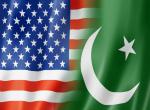
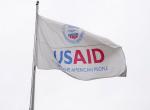
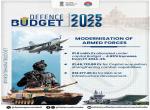

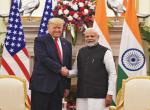

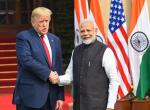
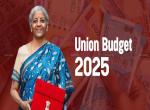
Post new comment